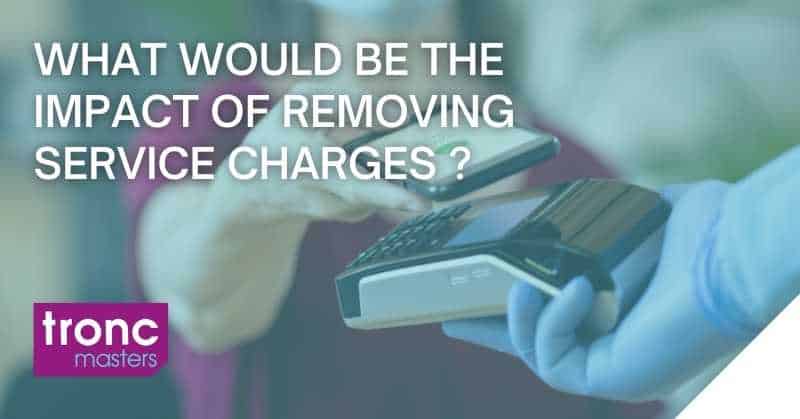
In the hospitality industry at the moment there is a lot of discussion around pay, and there are a few key drivers fueling the discussion. There have even been protests at Westminster as we discussed in our recent blog post “Protests around lack of legislation protecting troncs.”
Firstly, the industry is still being tainted by unscrupulous employers holding on to significant proportions of the service charges. Secondly, the impact of the global COVID-19 pandemic and the exclusion of tips, service charges and gratuities from the Coronavirus Job Retention Scheme (CJRS). This meant that despite these monies making up a large amount of workers income, they were excluded from the Government scheme.
Both are major issues that we aren’t going to touch on. However, we would like to touch on the current trend to push for excluding service charges from bills and paying your team a proper wage that reflects the experience that they bring to your customers.
It’s worth a look at the numbers to understand the differences between how employees and businesses are taxed when charging more and paying increased wages to team versus the more traditional tronc solution.
Modelling the changes
Let’s first think about the taxes and charge at play here. The interaction between all of the taxes is complex and involves VAT, Corporation Tax, PAYE, National Insurance, Pensions, Student loans and Apprenticeship levy.
The principle we are exploring is replacing a current service charge with an increased bill and increased wages for staff.
Our modelling shows that, in a VAT registered business, where there is
- an average per head charge of £30;
- a voluntary service charge of 12.5%;
Employees would expect to receive £2.86 – assuming the tronc admin charges are a maximum of 5%.
If we compare this with the cost of putting the same take home pay to employees by increasing hourly rates of pay for staff the numbers are startling.
If the plan is for the business to be no worse off, by dropping service charges you would need to increase the menu price by 21%. And the total amount a customer would need to pay on average 7.7% more than they did previously for the employee to receive the same £2.86.
These numbers get worse if you are a larger chain paying Apprenticeship Levy and you have employees that are repaying Student Loans. In this scenario customers would need to pay 11% more to compensate an individual exactly the same as under a tronc.
Our view
To replace tronc with pay and ensure your team are no worse off you are going to need to charge your customers more, somewhere between 7.7% and 11% than you do with your current service charge arrangements. This only makes sure your employees receive the same take home pay.
However, if you could justify increasing your service charges by these amounts, your employees would be significantly (70% -99%) better off in their take home pay.
Clearly, it is not as black and white as that, but the current system, with its attractive National Insurance savings, is not stacked in favour of paying your people wages. Shifting away from Service charges and Troncs to a fairer system is laudable.
But if not tackled carefully, customers will foot the bill, the Exchequer will benefit from increased taxation, and the team members you are trying to help will be no better off in their take home pay.
With the current regime, and the promise of implementing the recommendations of the Good Work Plan and “The Tipping Bill” recently tabled by Dean Russell MP, both seeking to eliminate unscrupulous practices from employers, voluntary service charges and troncs may well be around for a significant time yet.
To find out more on how to setup and run an efficient and low cost tronc contact our Troncmasters experts.
